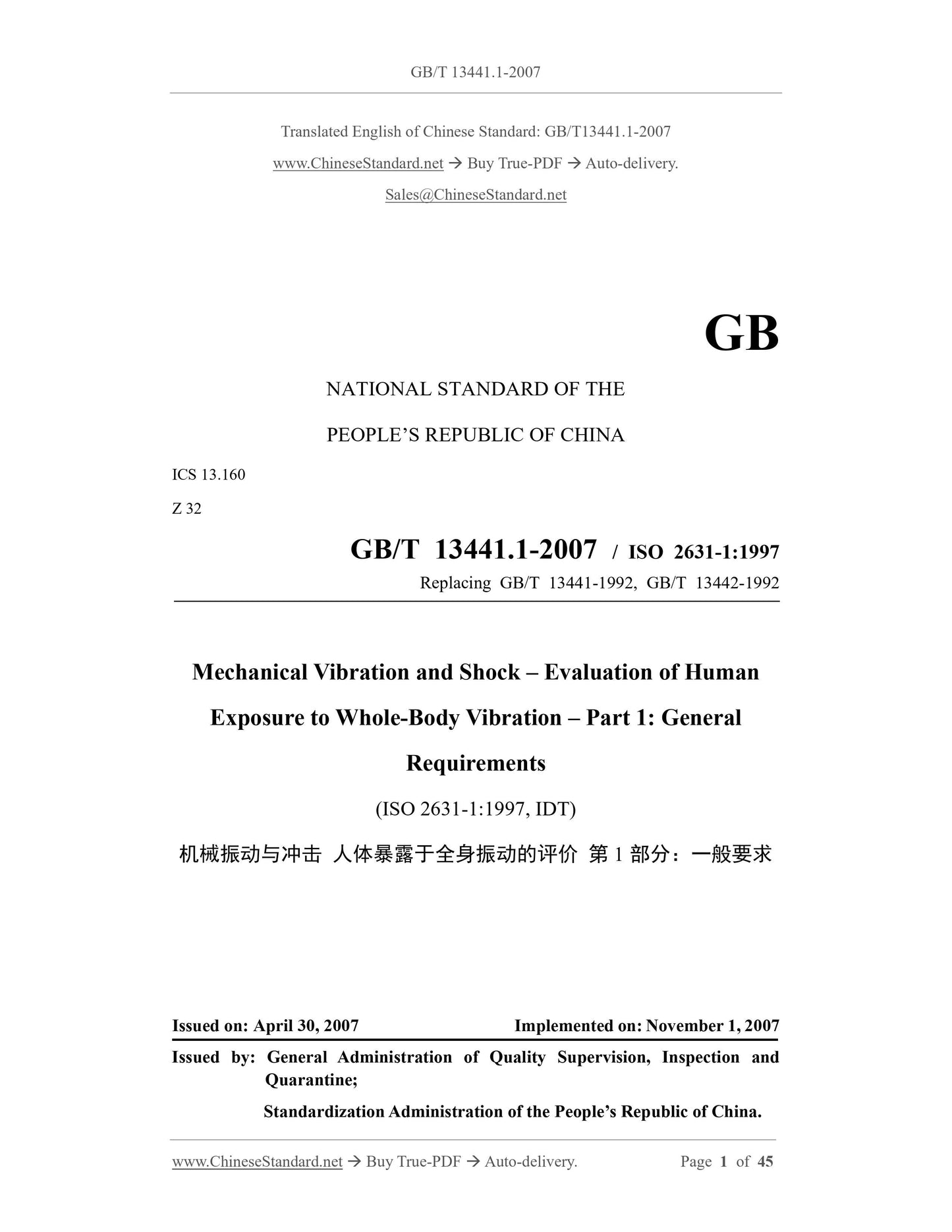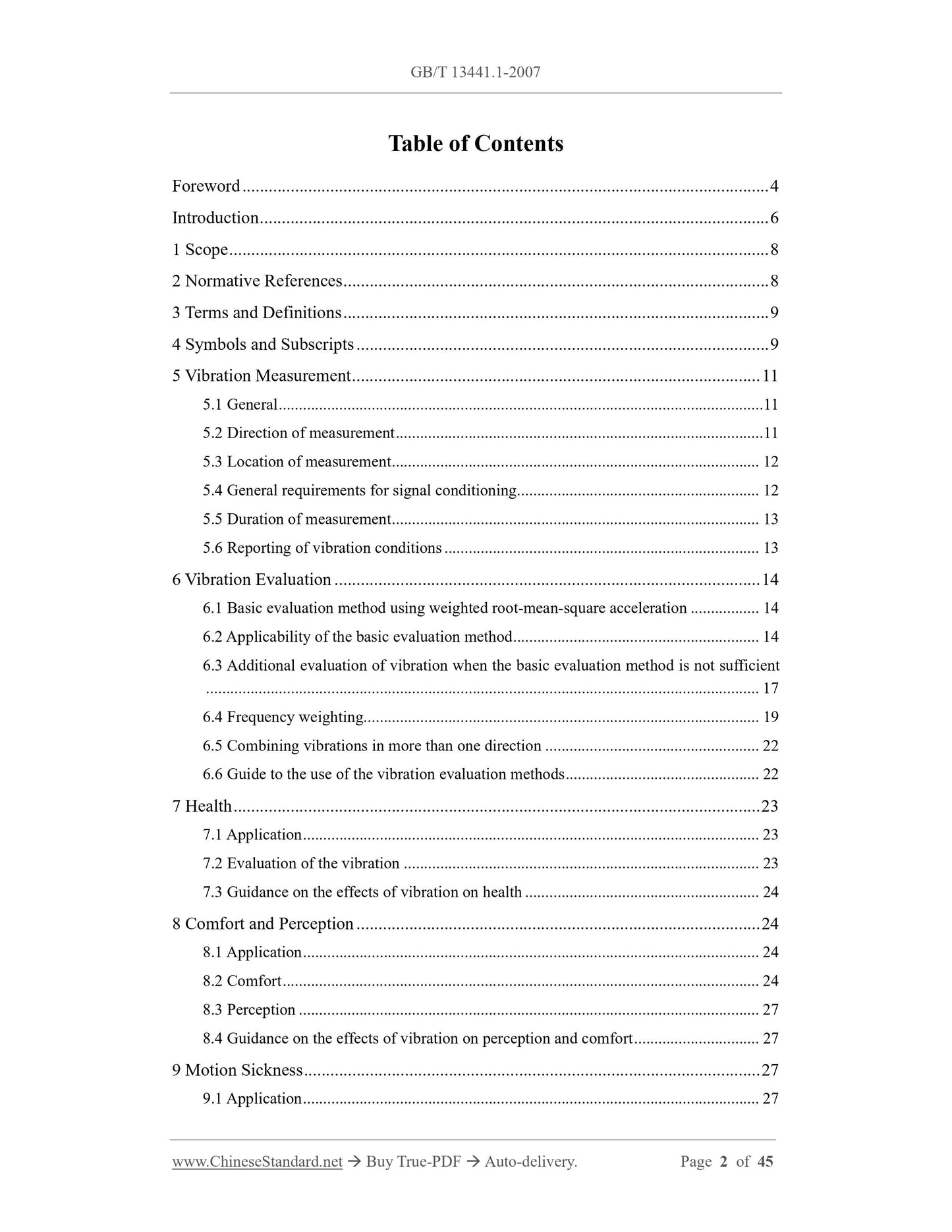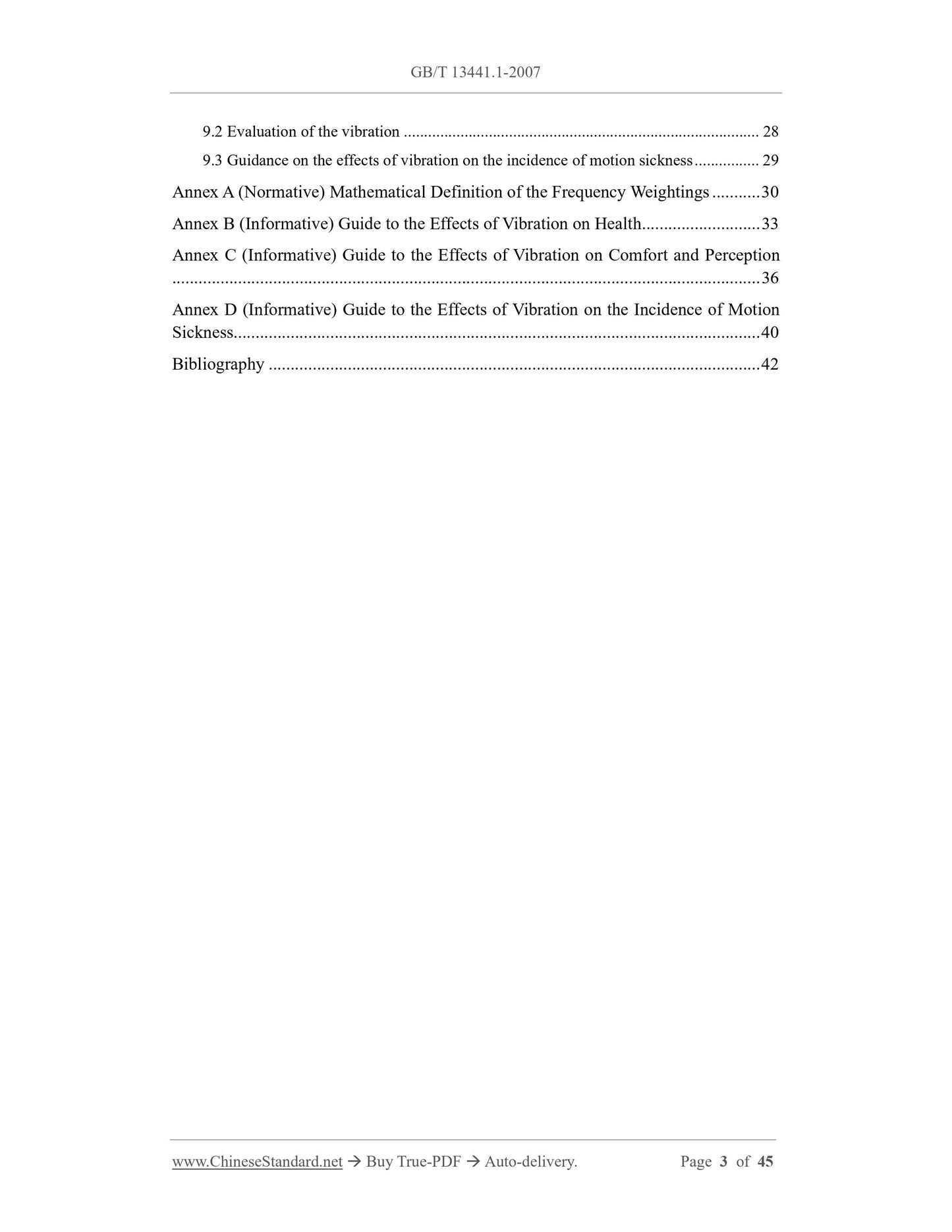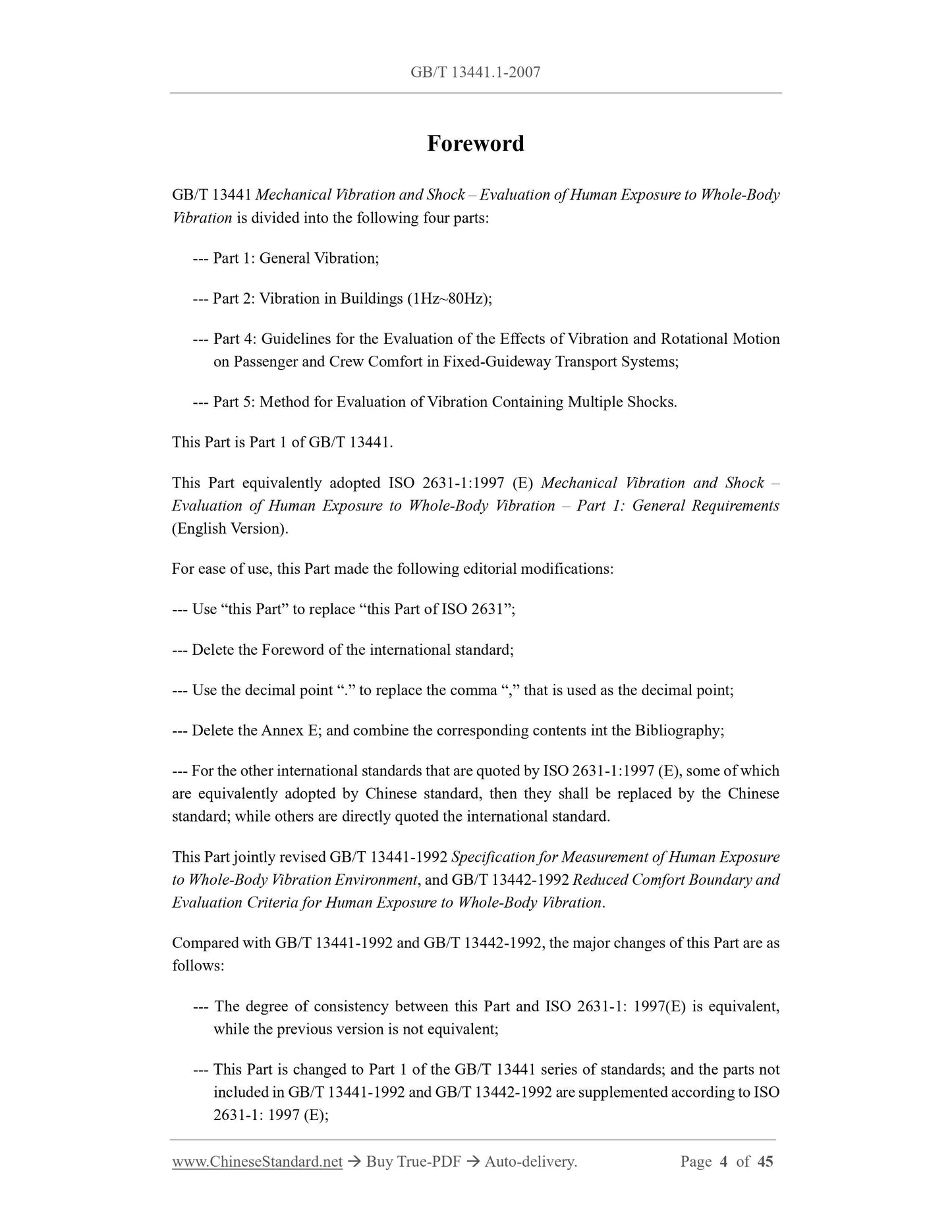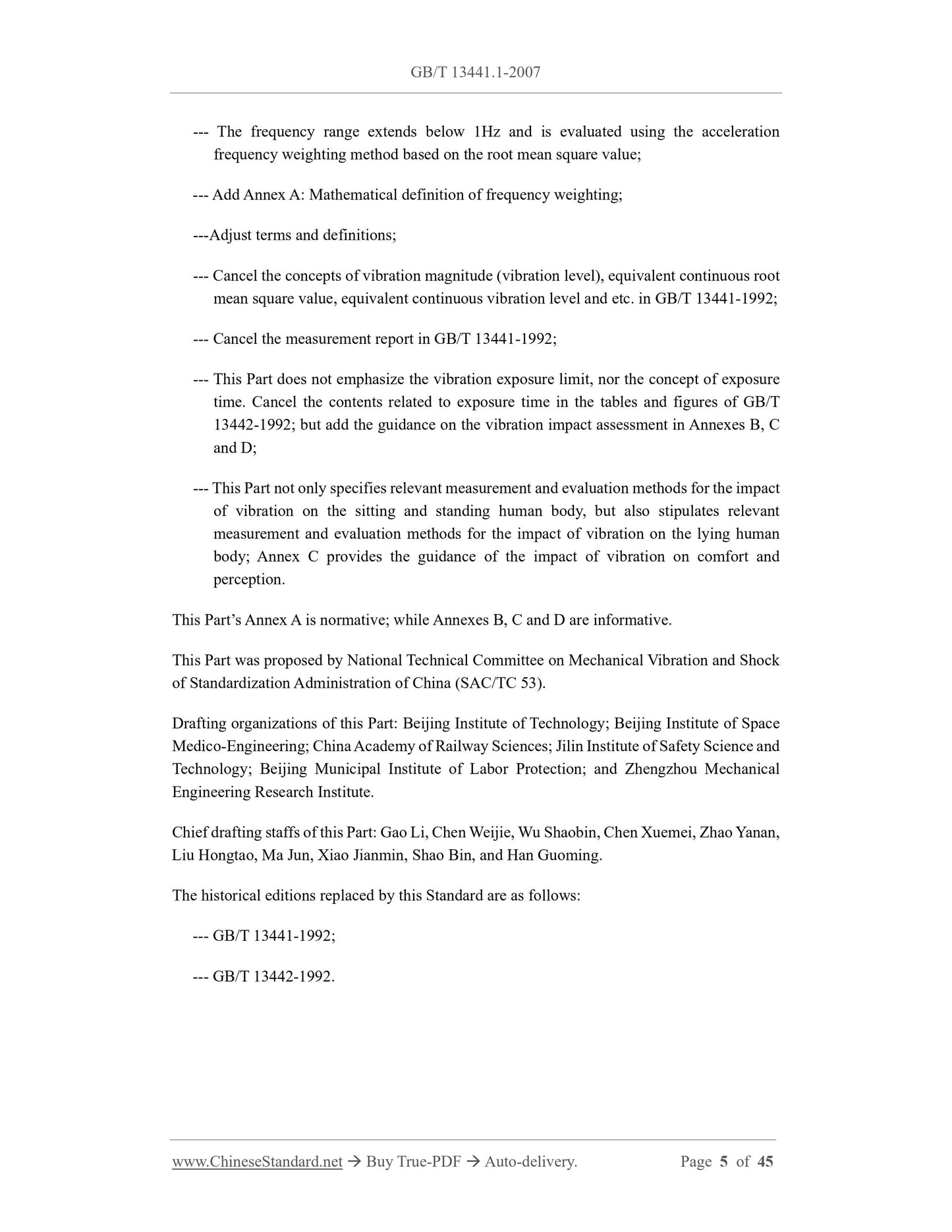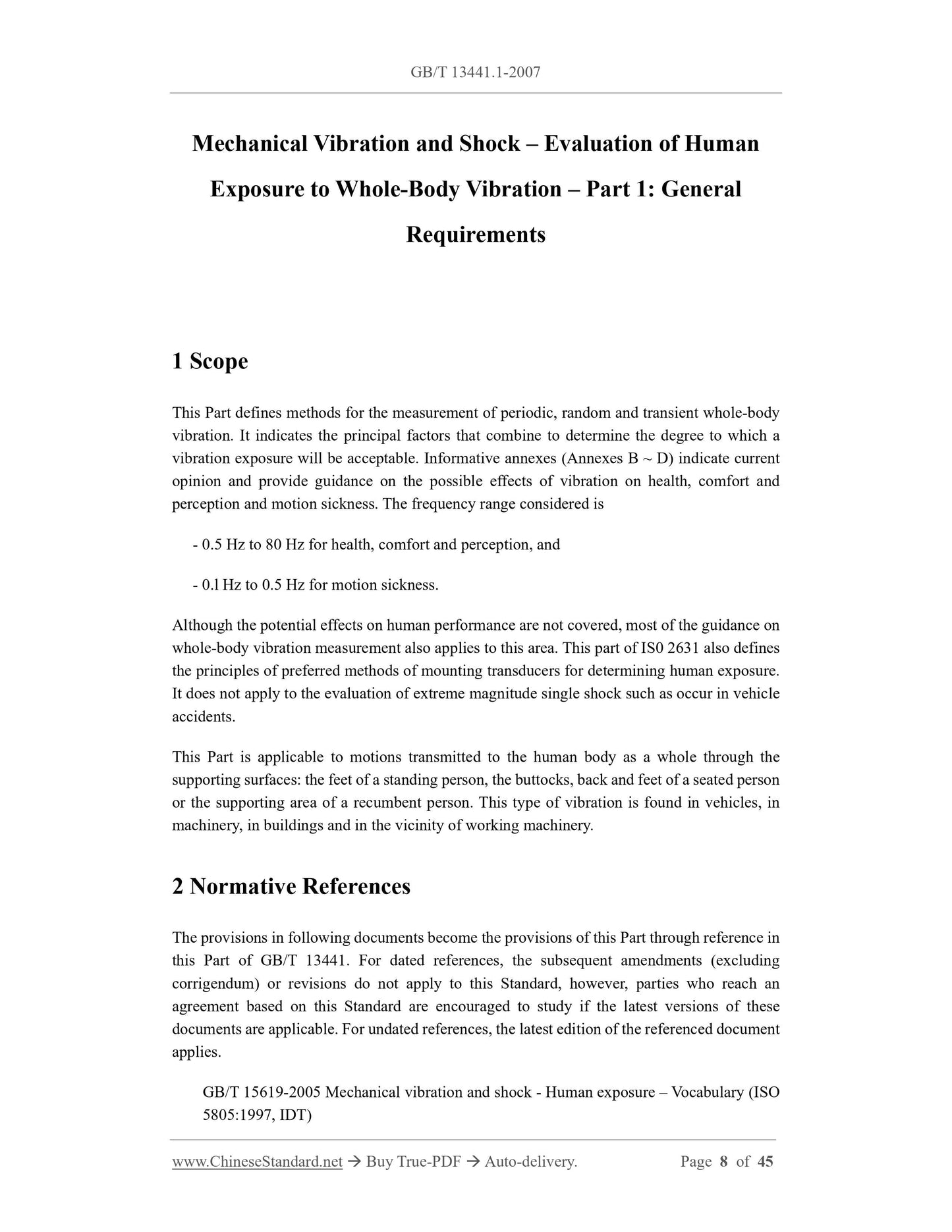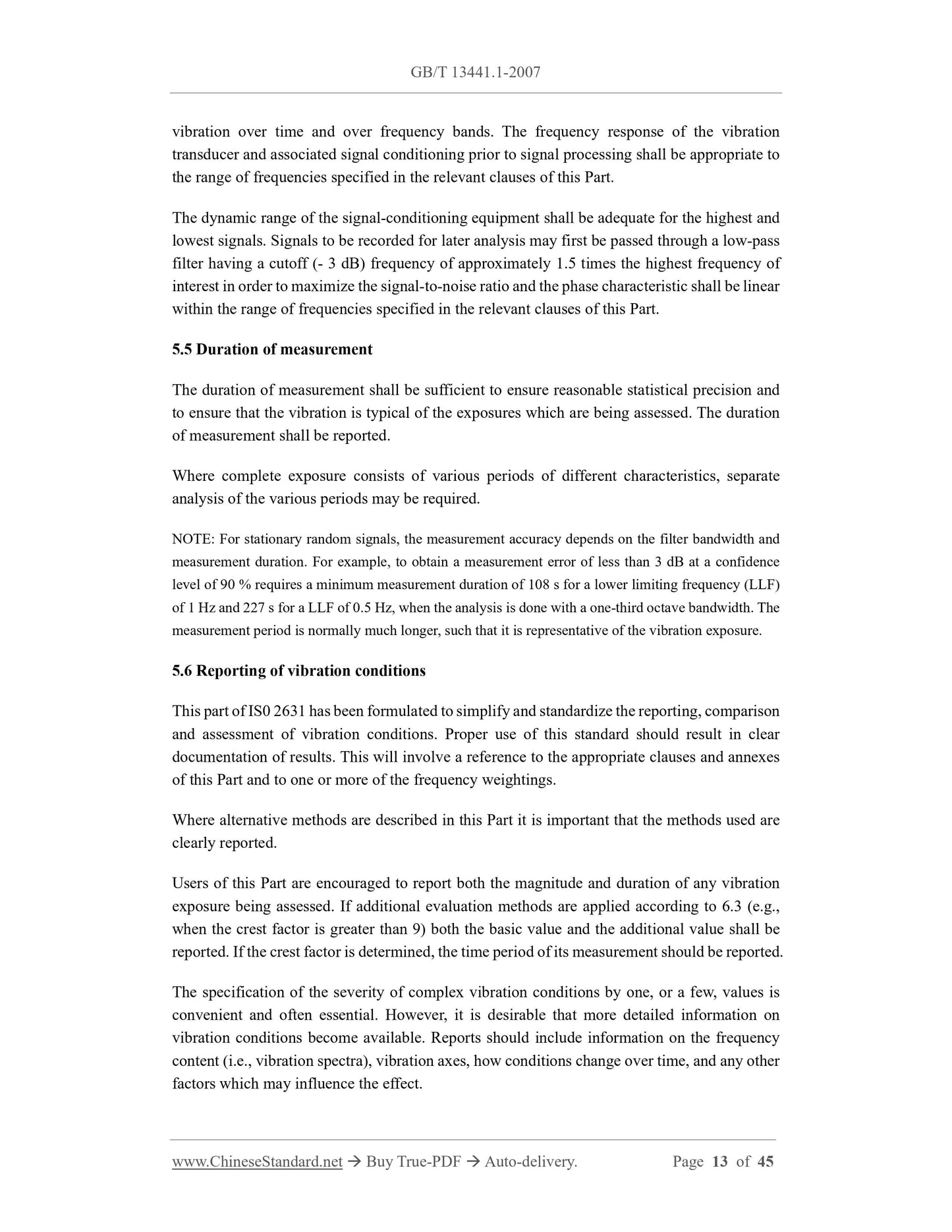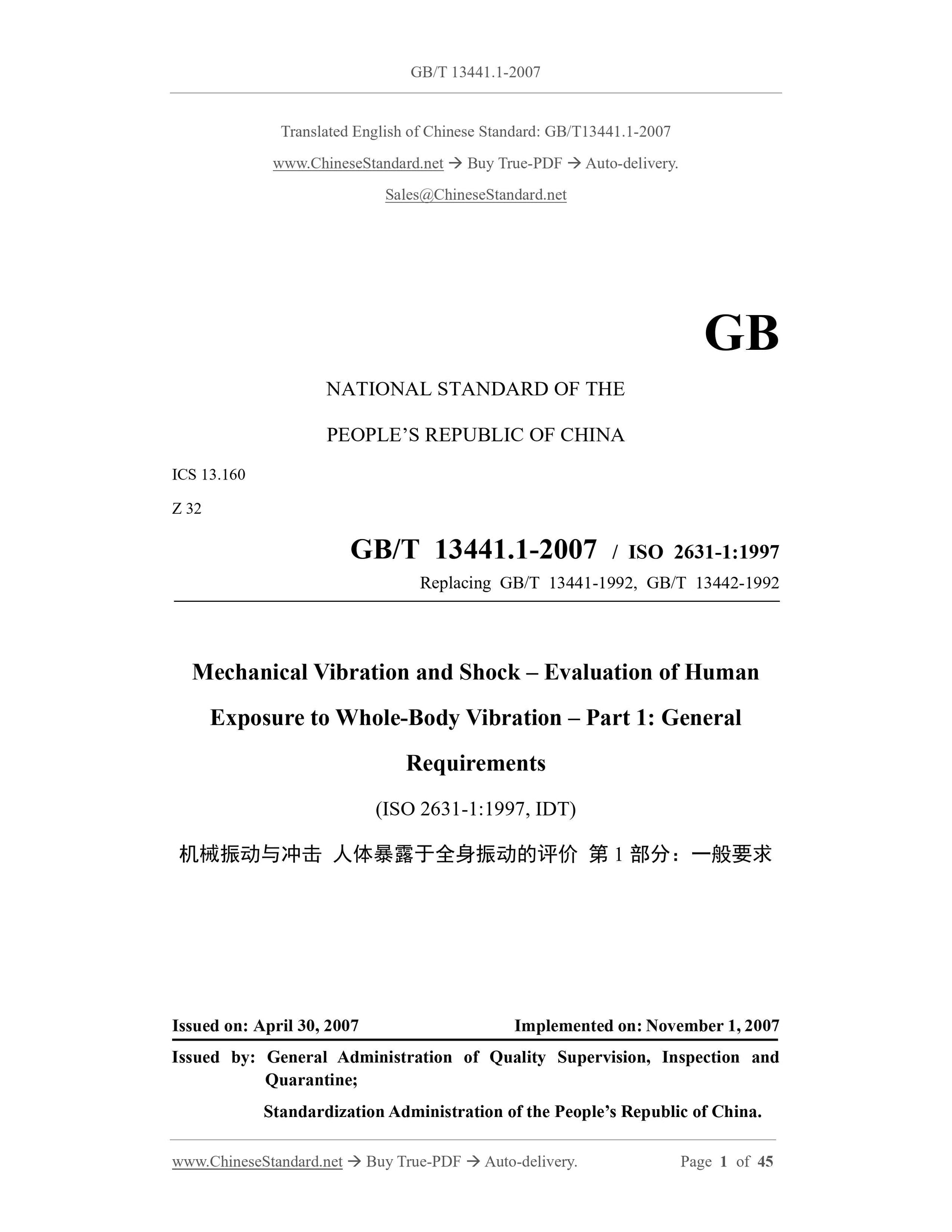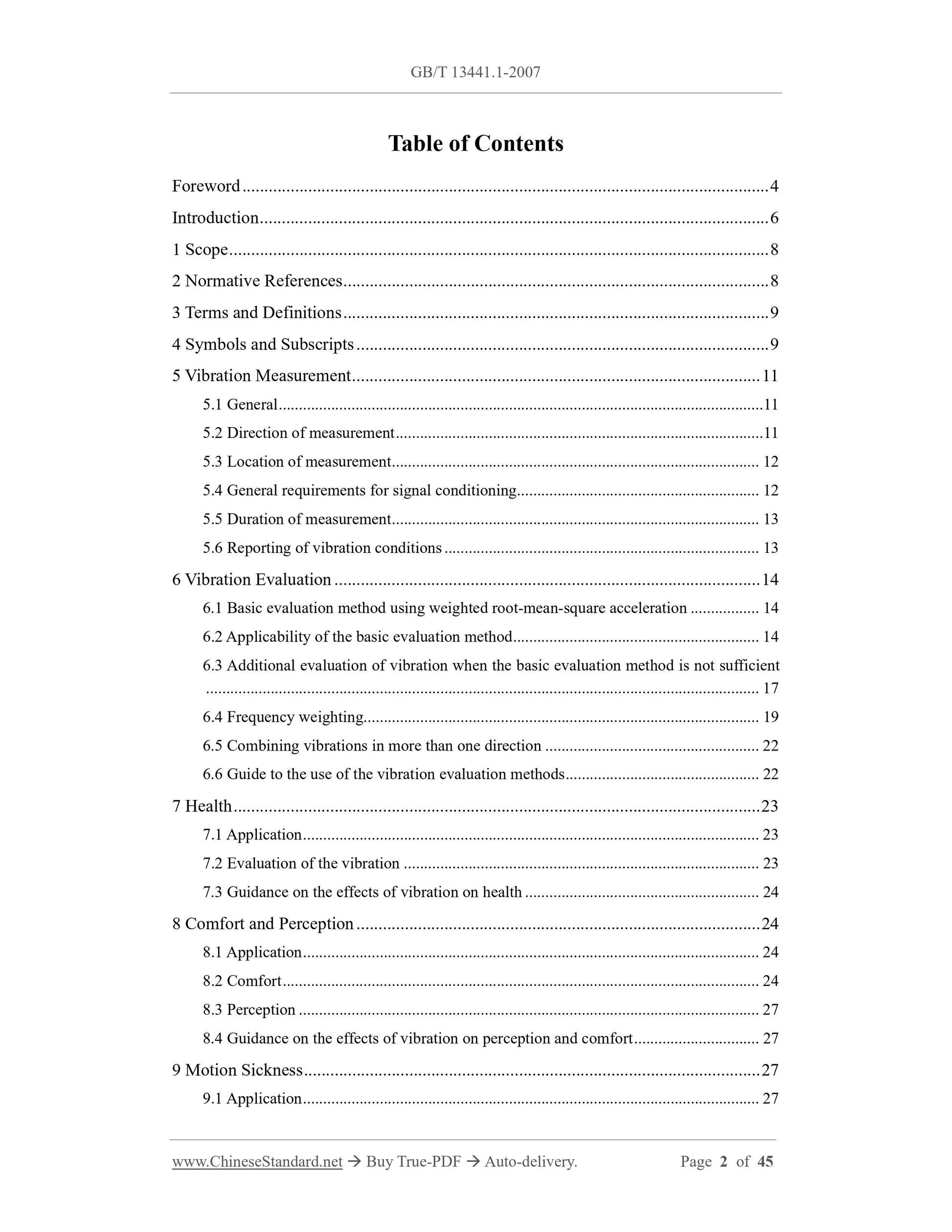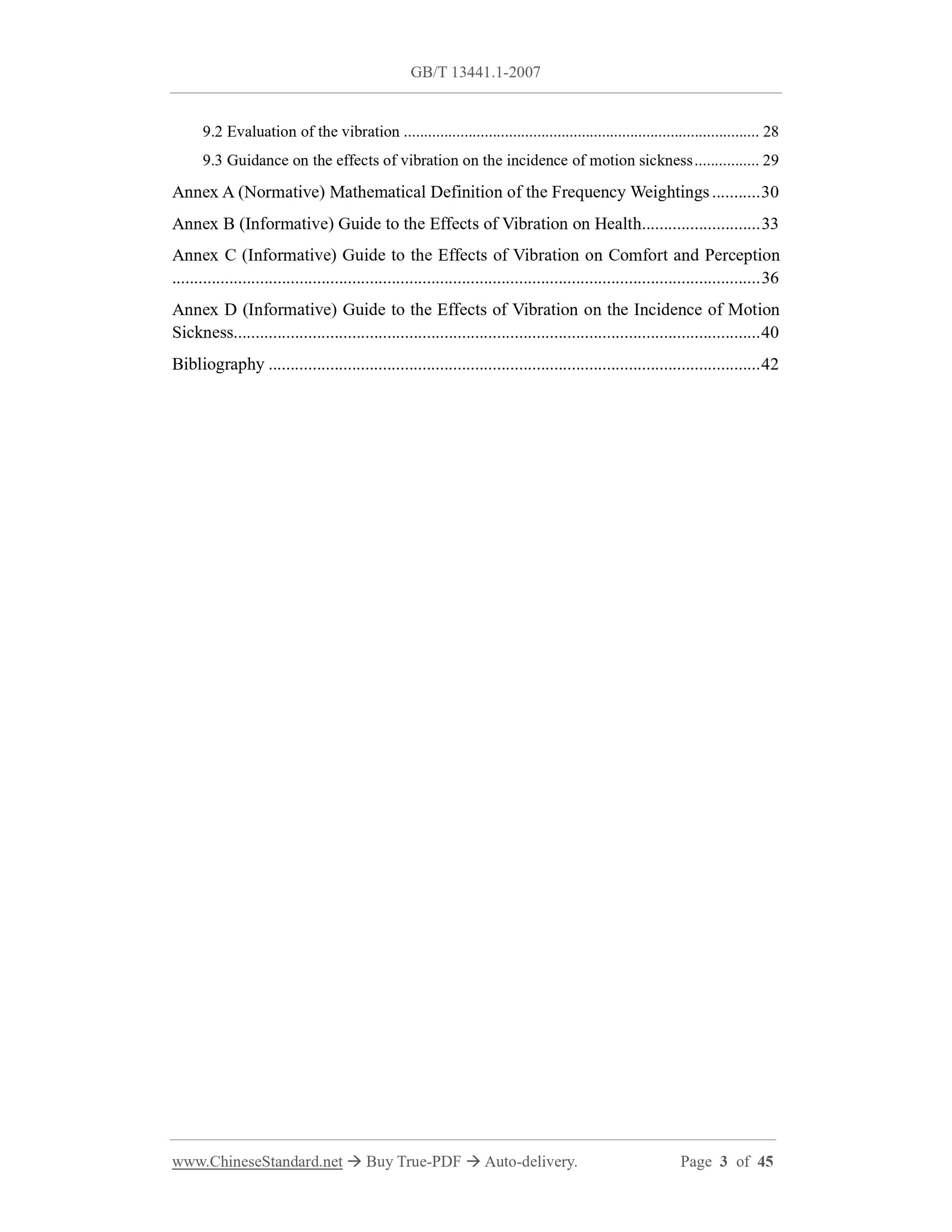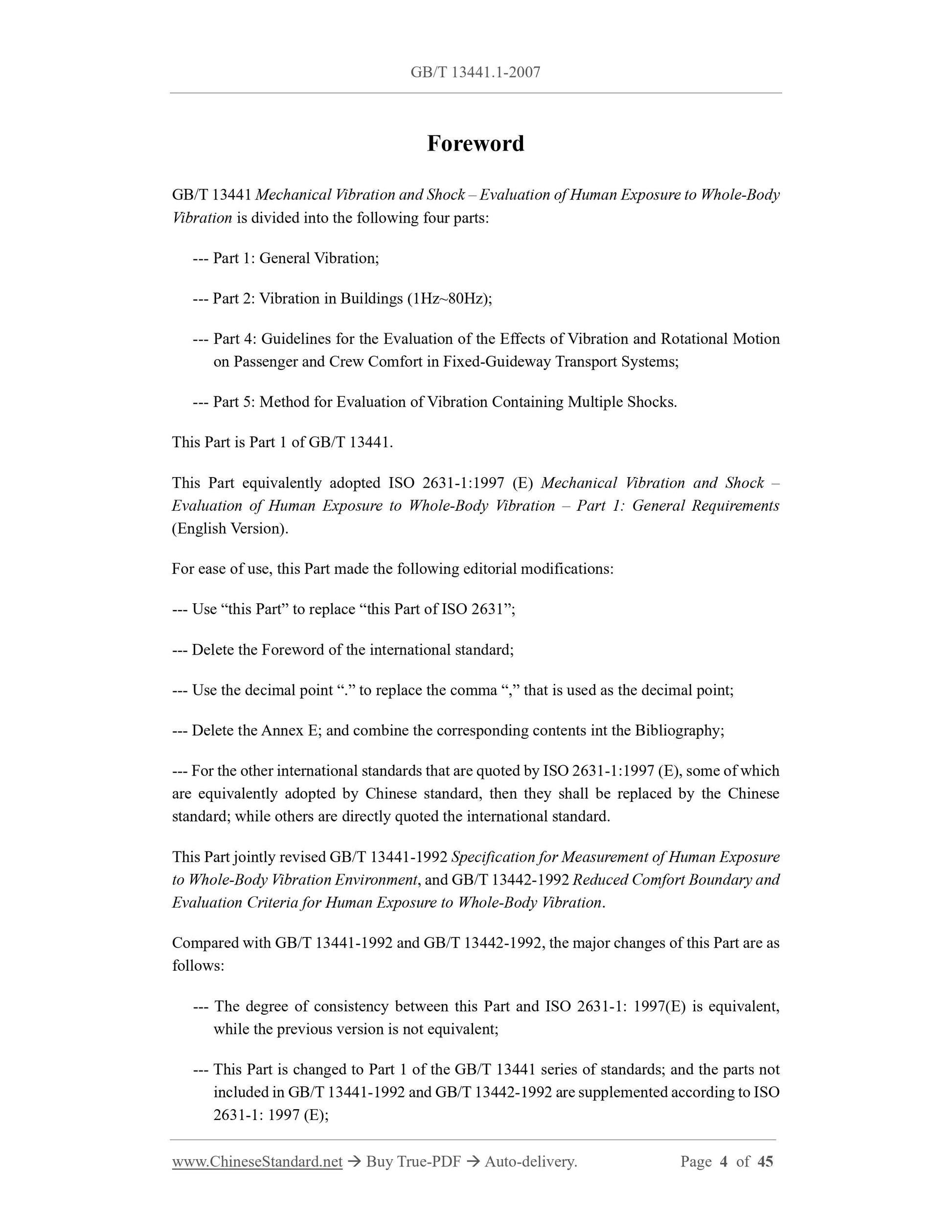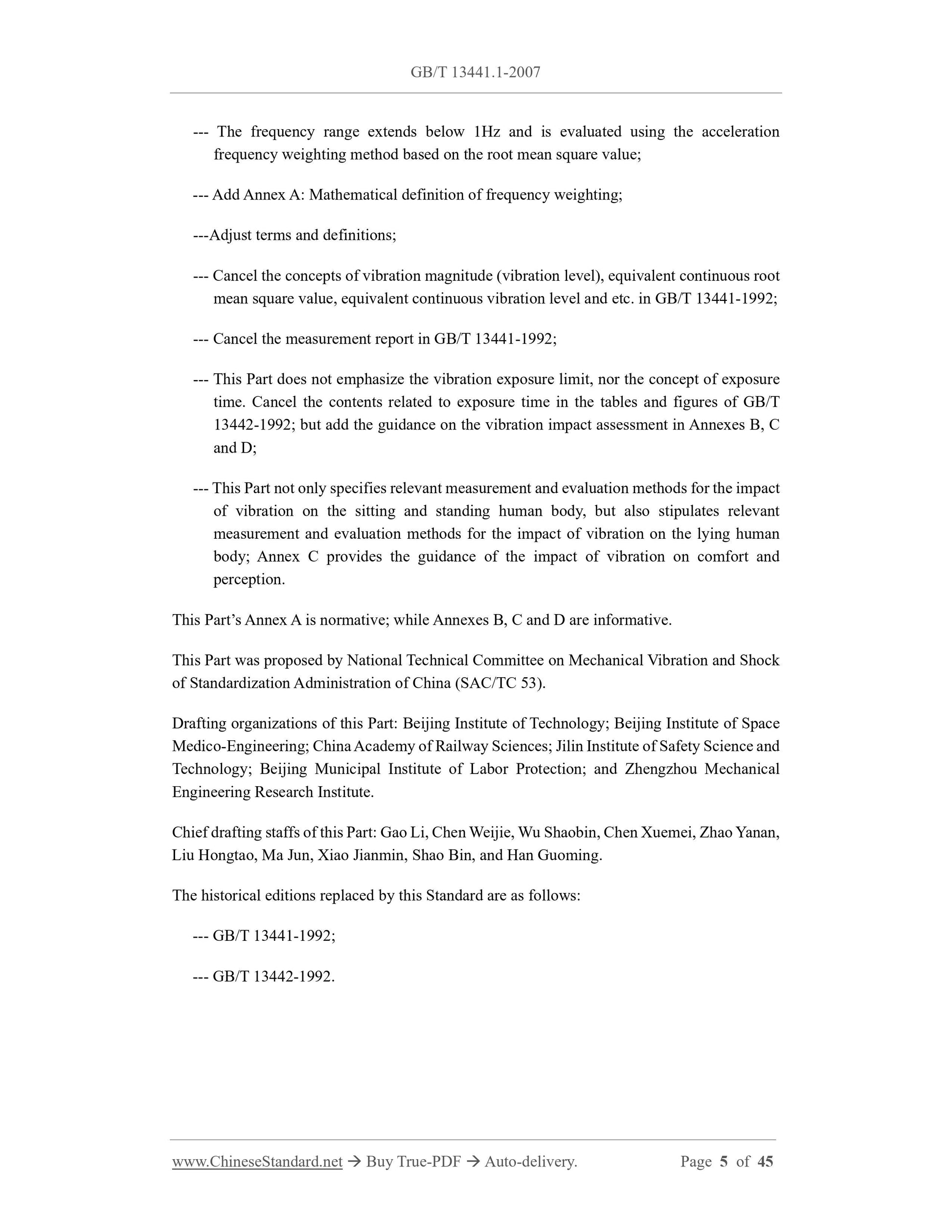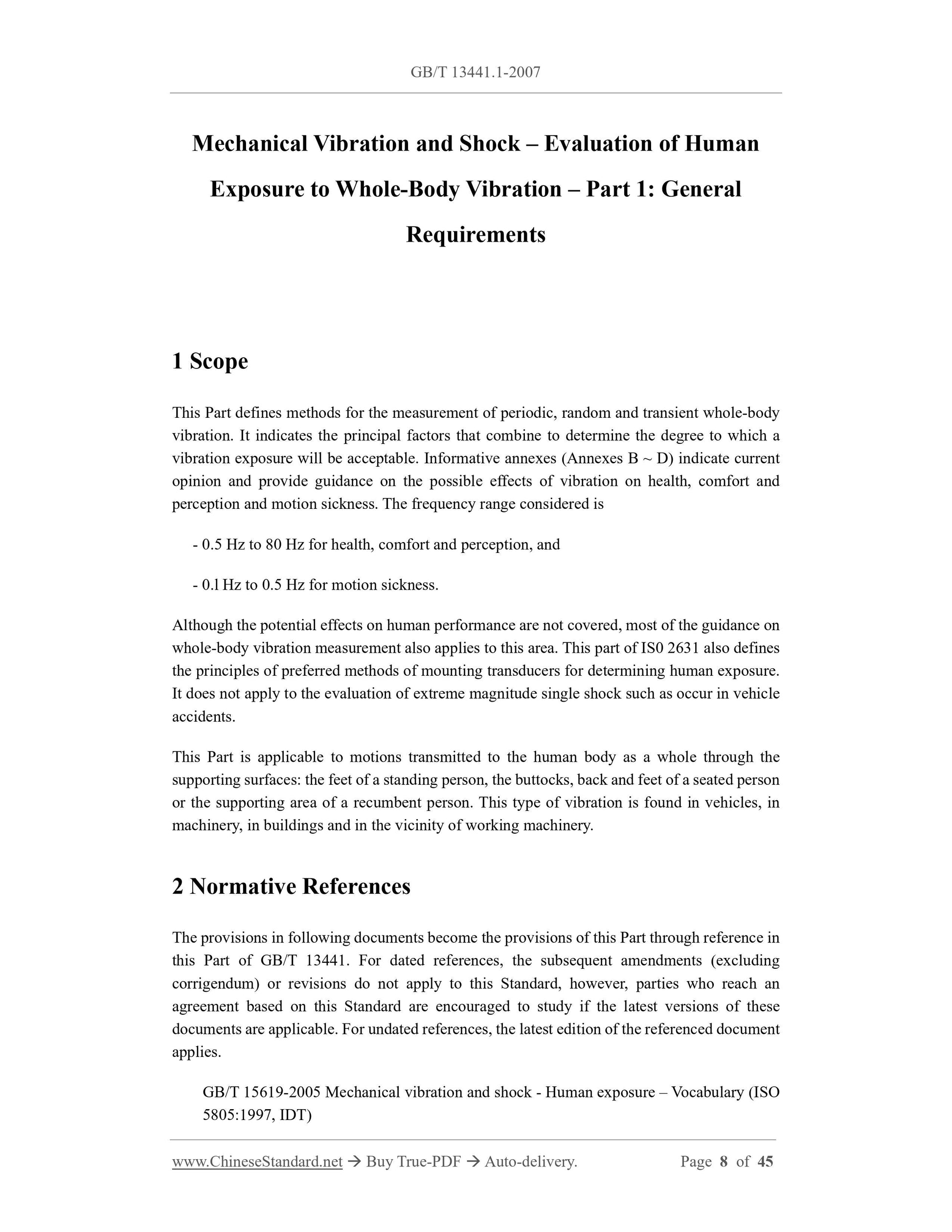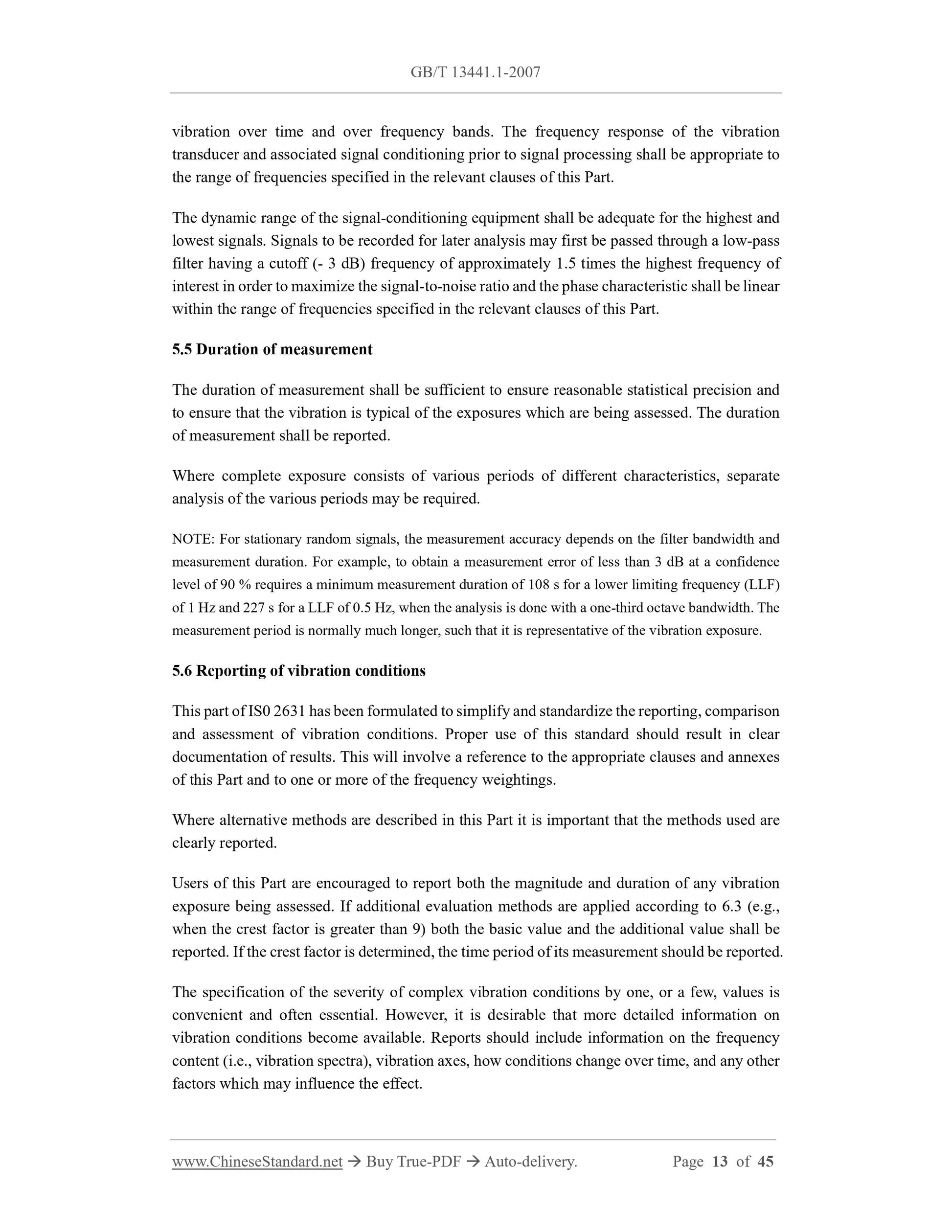1
/
of
7
www.ChineseStandard.us -- Field Test Asia Pte. Ltd.
GB/T 13441.1-2007 English PDF (GB/T13441.1-2007)
GB/T 13441.1-2007 English PDF (GB/T13441.1-2007)
Regular price
$400.00
Regular price
Sale price
$400.00
Unit price
/
per
Shipping calculated at checkout.
Couldn't load pickup availability
GB/T 13441.1-2007: Mechanical vibration and shock -- Evaluation of human exposure to whole-body vibration -- Part 1: General requirements
Delivery: 9 seconds. Download (and Email) true-PDF + Invoice.Get Quotation: Click GB/T 13441.1-2007 (Self-service in 1-minute)
Newer / historical versions: GB/T 13441.1-2007
Preview True-PDF
Scope
This Part defines methods for the measurement of periodic, random and transient whole-bodyvibration. It indicates the principal factors that combine to determine the degree to which a
vibration exposure will be acceptable. Informative annexes (Annexes B ~ D) indicate current
opinion and provide guidance on the possible effects of vibration on health, comfort and
perception and motion sickness. The frequency range considered is
- 0.5 Hz to 80 Hz for health, comfort and perception, and
- 0.l Hz to 0.5 Hz for motion sickness.
Although the potential effects on human performance are not covered, most of the guidance on
whole-body vibration measurement also applies to this area. This part of IS0 2631 also defines
the principles of preferred methods of mounting transducers for determining human exposure.
It does not apply to the evaluation of extreme magnitude single shock such as occur in vehicle
accidents.
This Part is applicable to motions transmitted to the human body as a whole through the
supporting surfaces: the feet of a standing person, the buttocks, back and feet of a seated person
or the supporting area of a recumbent person. This type of vibration is found in vehicles, in
machinery, in buildings and in the vicinity of working machinery.
Basic Data
| Standard ID | GB/T 13441.1-2007 (GB/T13441.1-2007) |
| Description (Translated English) | Mechanical vibration and shock -- Evaluation of human exposure to whole-body vibration -- Part 1: General requirements |
| Sector / Industry | National Standard (Recommended) |
| Classification of Chinese Standard | Z32 |
| Classification of International Standard | 13.160 |
| Word Count Estimation | 30,395 |
| Date of Issue | 2007-04-30 |
| Date of Implementation | 2007-11-01 |
| Older Standard (superseded by this standard) | GB/T 13441-1992; GB/T 13442-1992 |
| Quoted Standard | GB/T 15619-2005; GB/T 18707.1-2002; ISO 2041; ISO 8041; IEC 1260 |
| Adopted Standard | ISO 2631-1-1997, IDT |
| Regulation (derived from) | GB Notice 2007 No. 4 (No. 104 overall) |
| Issuing agency(ies) | General Administration of Quality Supervision, Inspection and Quarantine of the People's Republic of China, Standardization Administration of the People's Republic of China |
| Summary | This standard specifies the cycle, random and transient whole-body vibration measurement method, pointed out the comprehensive decision vibration exposure can be a major factor in the acceptance procedure. Appendix B to Appendix D shows the current view and provides vibration on health, comfort and perception, motion sickness may affect the guide. Frequency range considered are: the health, comfort and perceived as 0. 5 H ~ 80 Hz, against motion sickness is 0. 1 Hz ~ 4. 5 Hz. Although not involving human behavior potentially shaped ring. Here on whole-body vibration measurements in the guide are also available to the vast majority of this area. This section also provides for determination of human exposure, and the preferred method of mounting the sensor principle. This does not apply to all points like a great vehicle accidents resulting single hit. This section applies to the support surface to pass through the entire body movement, including those supporting surface people's feet standing or sitting person 's buttocks, back and feet or lying person support area. This type of vibration appear in the transport, machinery and equipment, buildings, and are working near the machine. |
Share
